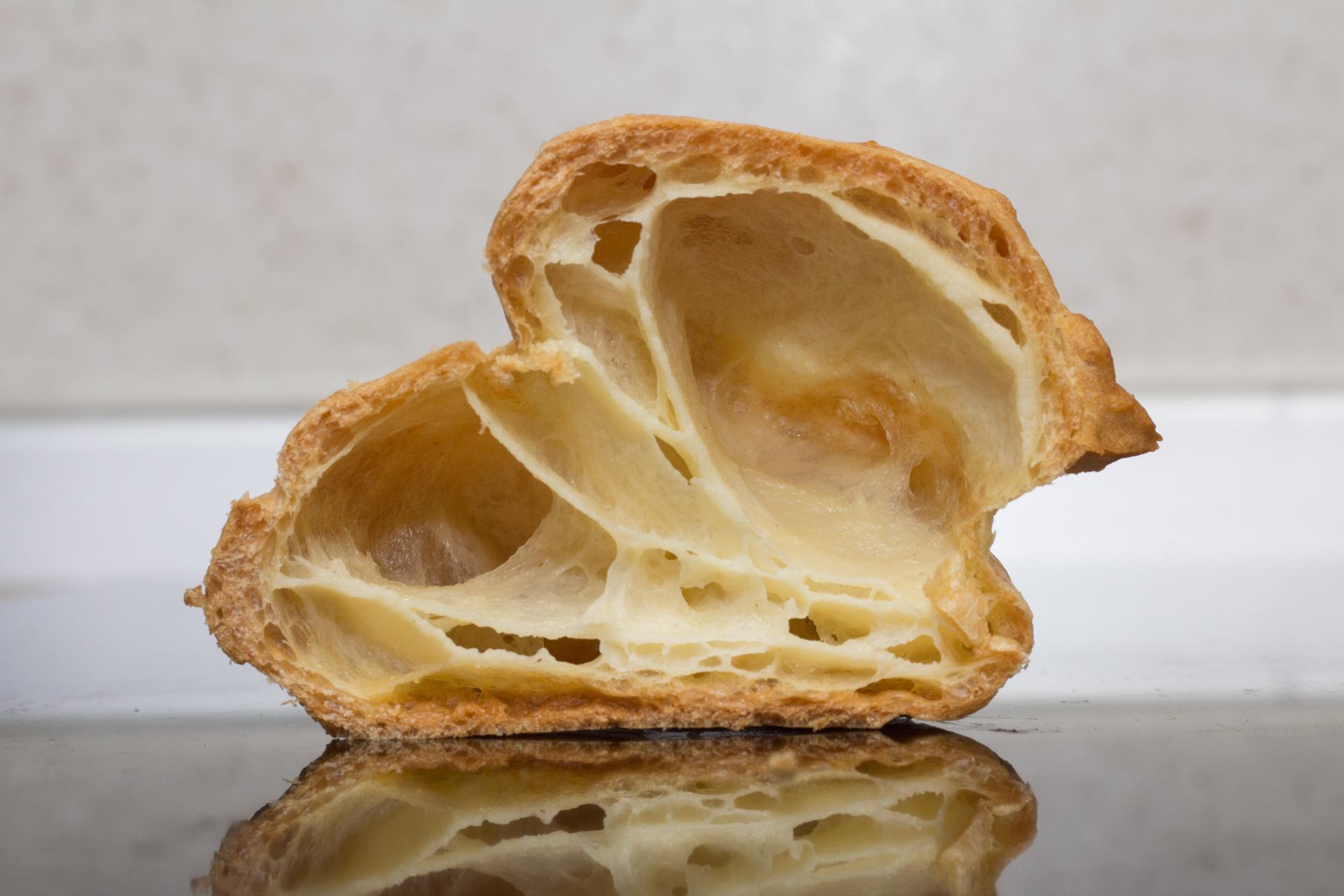
We make a slight touch of scientific madness in traditional cooking. Today we will talk about some of the consequences of the Mendeleev-Klaperon equation and the collapse of gas bubbles with temperature changes. We will also touch on the peculiarities of the molecular chains of starch and the colloidal solutions that it forms. Just poking around in the equations is boring, so we can combine business with pleasure. Create a perfect profit. Today we have two main objects to learn - choux pastry and custard with whipped cream. Naturally, we will create all this disgrace solely to the glory of science. Well, at the same time we will understand the processes that are not described in cookbooks.
In the end, in vain did I spend 28 eggs and a couple of weeks for experiments?
The law is gay-lussac and what's the profiter?
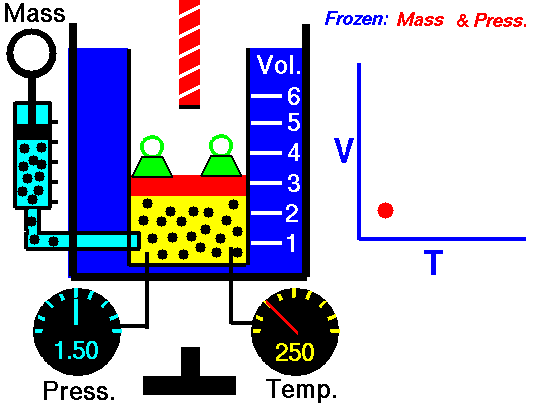 Illustration of the linear relationship between the volume of gas and its temperature.
Illustration of the linear relationship between the volume of gas and its temperature.The Gay-Lussac law is a direct consequence of the Mendeleev-Klaperon equations and can be formulated with one simple formula:
V = constant * T. Please note that it is valid for situations with
constant pressure . With a constant mass of gas and constant pressure, the volume of gas is directly proportional to the absolute temperature. Accordingly, the difference in the volume of gas at constant pressure is described by the following equation:
fracVt−V0V0= alpha(t−t0)
or
frac DeltaVV0= alpha( Deltat)
where
Vt - the volume of gas at a given temperature
t in degrees Celsius and
alpha volumetric expansion ratio:
alpha= frac1273K−1
Why is this important in the context of choux pastry and profitrolls? The main problem faced by all novice pastry chefs is the dropping of highly porous pastries. At the same time, the process of “raising” the test is quite well described by the mentioned law. In the process of heating water turns into gas and begins to stretch the walls of the dough. The bubble reaches some sizes, but with a sharp drop in temperature, its volume proportionally drops and the profit roll “blows off”, turning into a flat pancake curve. Fail. I have been experimenting with different variants of temperature profiles for a long time and tried to formulate optimal baking parameters a little more strictly. Typical baking start temperature is 220 ° C. The critical temperature, after which the profitrol collapse occurred, was approximately 150 ° C. If all this ugliness is translated into Kelvins and calculated according to the Gay-Lussac equation for isobaric processes, then it turns out that the limiting decrease in volume that the half-solid profit walls can withstand 14-15%.
Summarizing:
do not allow the temperature to fall more than 70 degrees from the start to the final hardening of the test.
Cavities, temperature profiles and viscometry
The birth and collapse of the gas bubble
The process of formation of the cavity inside the profiter occurs in several stages.
The first stage is traditional for dough - boiling water forms a lot of small bubbles, which form the frothy pattern of ordinary bread. But we have oil. Lots of butter. It prevents the individual layers from being held together and the bubbles begin to merge.
The second stage is the fusion of gas bubbles. It is at this moment that the
fate of humanity is decided on the form of profit-making. Bubbles are rather large and separated from each other by thin soft walls. The size of these cavities depends on the viscosity of the dough and the temperature. It is highly desirable to have a high temperature from the start up to this point. Shock heat allows you to quickly “inflate” the bubble until the dough has hardened. If it is heated slowly, the upper layer will have time to dry out and limit the size of the growing cavity to a rigid frame.
The third stage is a merger. Partitions usually remain, but the cavity of the bubbles unite and begin to communicate through gaps in the membranes. By this time, growth and formation have been completed, it remains only to fix the form. At this stage, we reduce the temperature and allow our design to lose water.

Bubble growth is limited by the elasticity of the walls and gravity. As we will see later, a critical factor here is the viscosity of the resulting test. Due to the weight of the vault of the profitability, the bubble flattens out and redistributes its pressure to the side walls. At this moment those weakest thinned areas are formed that will cause the collapse at the final stage. Until the dough has had time to fix its shape, it is they who become the weak link that cannot hold the desired shape. Usually these areas are clearly visible due to its transparency and a lighter shade. After long and painful tests with different temperature profiles for baking, control of humidity in the chamber and thoughtful looking sections, I came to the best option.
Start at 220 ° C. This is necessary for shock heating and maximum bubble volume. Very similar options are in the classic Arabic kitchen, when preparing pita with a cavity inside. With this temperature we wait for the end of growth. This is about 12 minutes.
Reduce the temperature to 180 ° C. Now the main factor for us is the water content in the air of the oven. Profiteroles themselves evaporate a lot of water, up to saturated steam. This is the moment that is hardly described. And in order for the walls to properly fix the shape, especially in thin areas,
we need to dry them well. Open the oven a couple of centimeters and quickly reset the steam, not allowing the temperature to drop. Seconds 15. A key marker - when glasses stop misting) Close and watch how dry air sucks all the water out of baking. Usually this procedure should be repeated 2-3 times. Total time - 30-35 minutes.
After such a fixation, you already do not care for the traditional tips "do not open, do not shake, do not breathe, and it is better not to look at them." Of the hidden tricks that may appear, the “bottom absorption” is particularly lacking. The frame is solid, and the bottom is still wet. It is solved by turning the scapula for a couple of minutes. Or by laying on a wire rack in the same oven. Another hint for an emergency, when you saw the profitability collapse beginning - you slam the door shut and turn on the fan on high temperature. I succeeded in modeling to straighten the walls back to full volume. If the collapse has passed a critical point, the result will already be pellets. Delicious. But sad.
Interesting viscosity in the kitchen
 Final baking form depending on viscosity
Final baking form depending on viscosityNo, we will not so much care and install a viscometer in the kitchen, measuring the properties of the dough in poises and pascal seconds. Although it would be interesting, probably. Let's just look closely at this important parameter. The viscosity of the source material is critical for the final result. On the one hand, the thinner the dough, the easier it is to form a gas bubble, since the resistance of the walls is greatly reduced. Plus, in the second phase, the cavities more easily merge into one large one. On the other hand, a small viscosity leads to spreading over the surface and the formation of smooth pancakes. The trouble is that the walls are not able to hold a large cavity in such an area. You just imagine the dome of the cathedral whose supports are spaced 300 meters apart. Here the same problem, only is expressed in the fact that the form of profit-making will be more lenticular. The ideal form, to which we strive, has a maximum volume with a minimum surface area. Ball. Unfortunately, you can get it except when baking somewhere on the orbital station. In order to get the walls with angles close to 90 °, we need to adhere to the optimal balance. In short, scales and a good eye are required.
There is, by the way, an idea of how to prevent the spreading of a liquid, but easily extensible dough. Unfortunately, there were no materials at hand to test in practice. You can try pouring batter into silicone / aluminum cylinders with an inner diameter of about 50 mm and a height of about 25 mm. In theory, a large volume mushroom profit rolls should turn out.
To hell with the physicist, let's experiment in practice
For the first experiment you will need the following materials:
- Water - 250 g
- Butter - 150 g
- Salt - 5 g
- Sugar - 5 g
- Flour - 160 g
- C2 eggs - 5 pieces / 250 g (average weight 50 g per egg)
From laboratory equipment you will need:
- Kitchen scales
- Mixing bowl
- Hand Whisk / Mixer / Combine / Blender
- Small saucepan
- Electric oven with precise temperature control
- Confectionery syringe (optional)
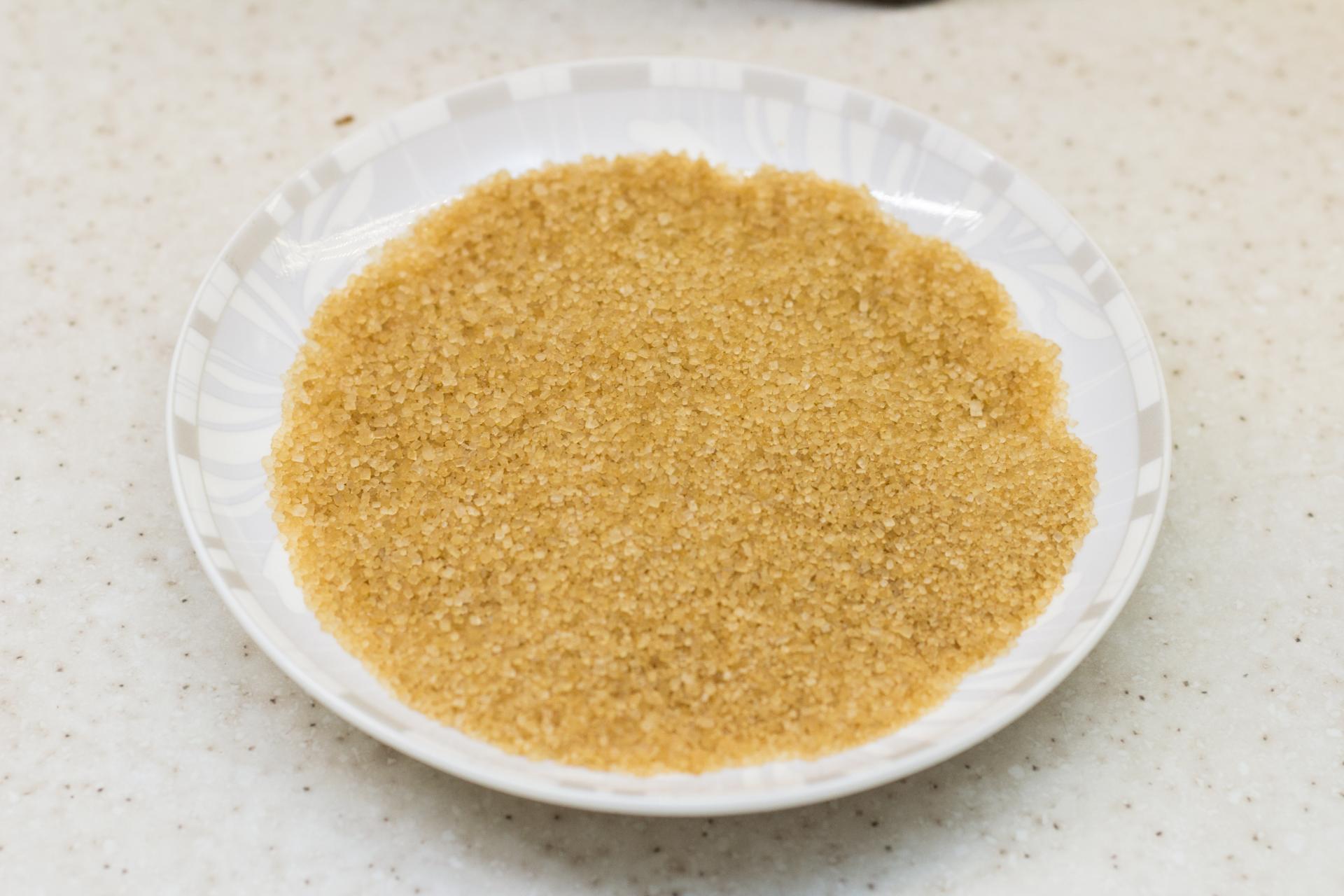
You can take, of course, and beet sugar, but if perfectionism is peculiar to you, I advise you to take cane. Hammer on crazy marketers who talk about the special antioxidant properties of cane, vitamins and minerals. Everything is easier - it is stupidly delicious. In addition to sucrose, there is a lot of tasty food in the cane itself.
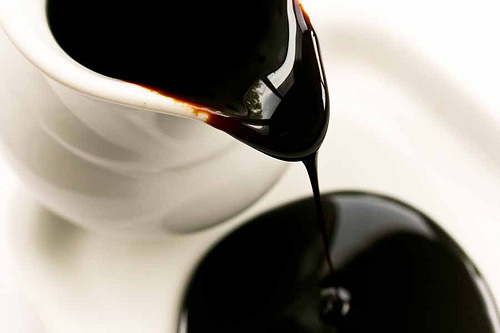 Beet molasses (molasses)
Beet molasses (molasses)But the beets on the contrary, you need as much as possible to clear from all related aromatic substances. The original molasses is so delicious that even pigs feel sick from it. Yes, refined sugar is made from this black slurry.

Throw in a saucepan good butter, salt, sugar and pour water. Heat to complete melting of the oil.
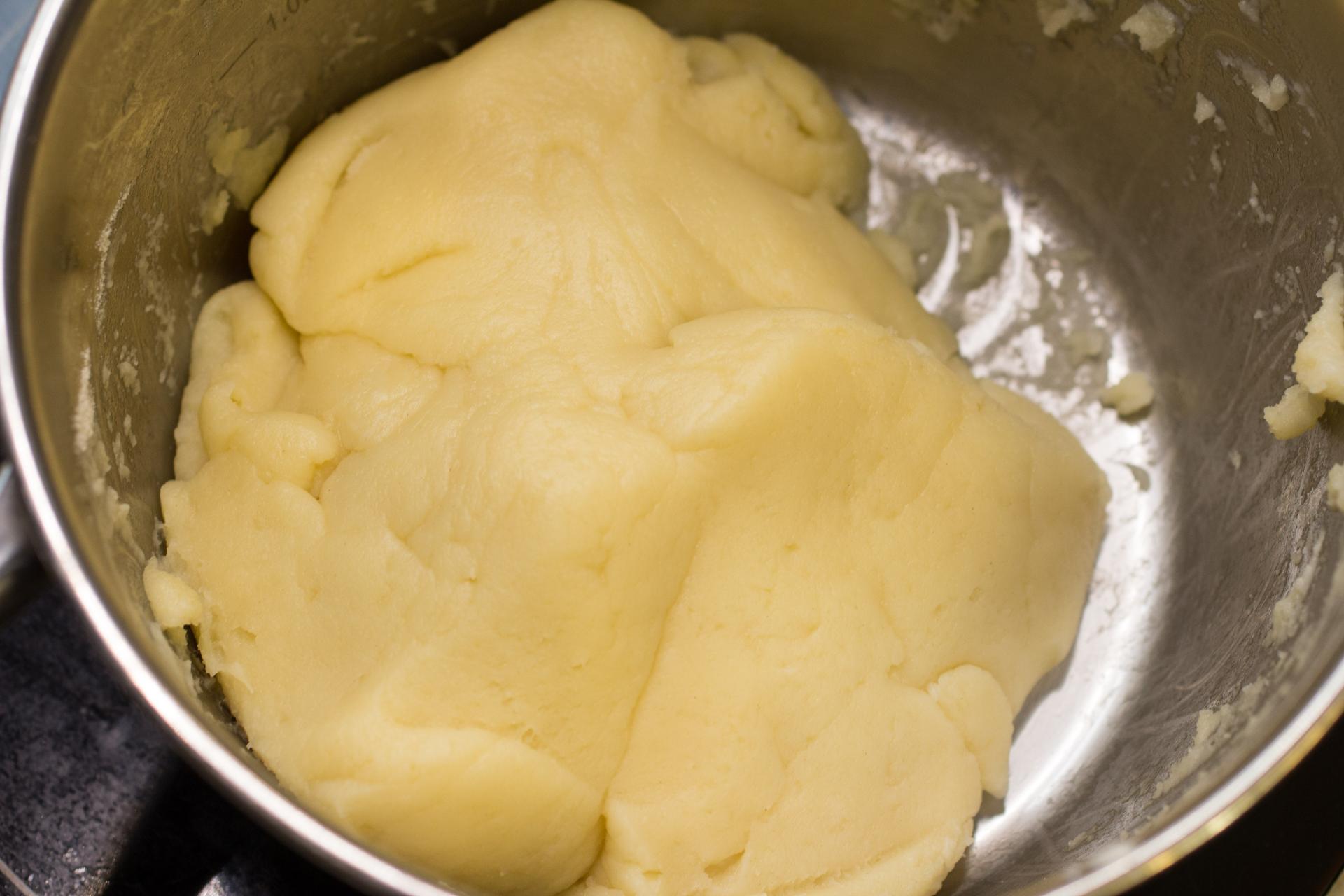
Add flour and mix quickly. The mass is shiny and very plastic.
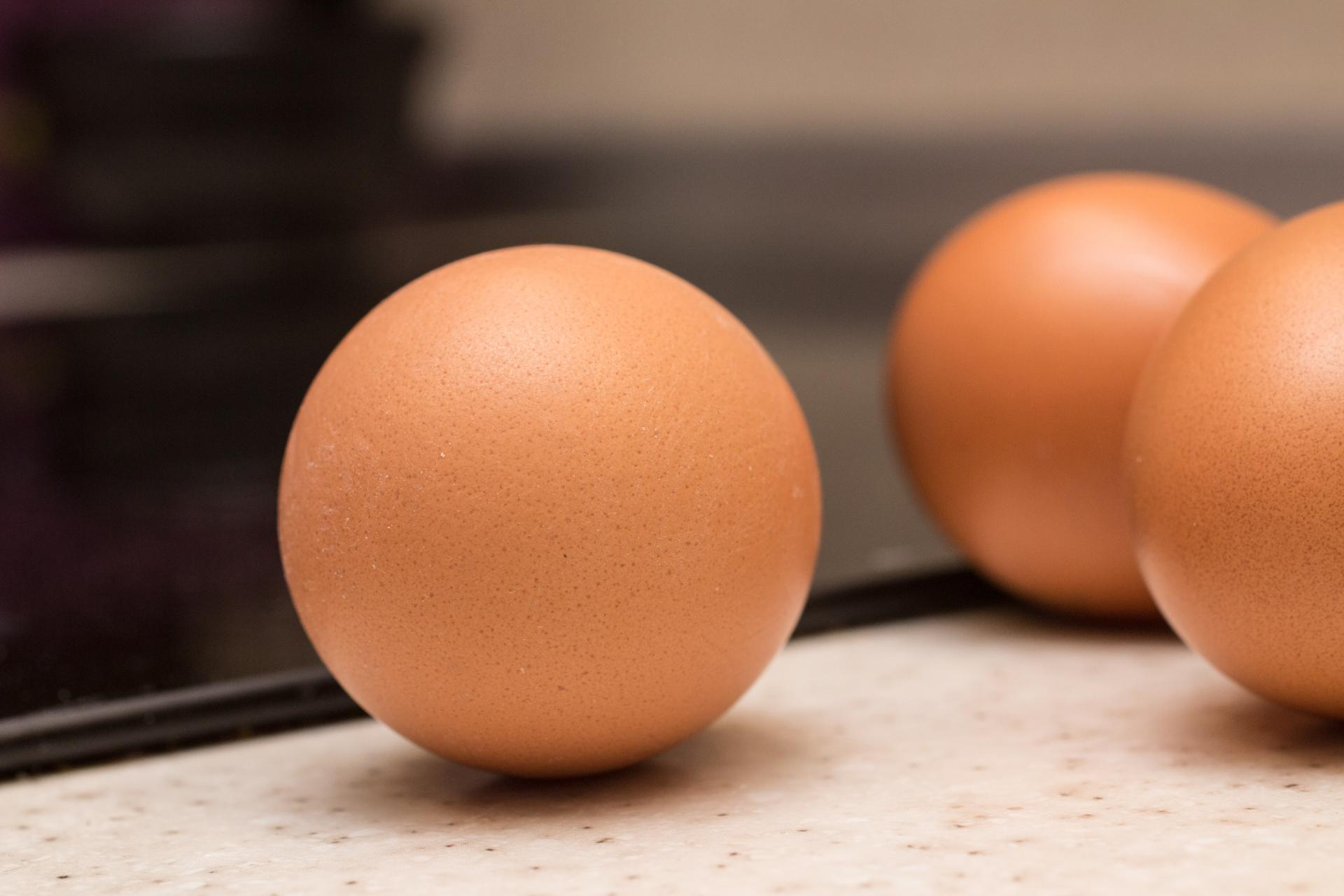
Eggs Key component. It is very easy to miss by weight. Note that in the recipe is the second grade (C2). He has GOST average weight of about 50 grams per egg, which greatly facilitates the dosing. Our task is to give the dough an optimal consistency. Depending on the flour, which is very different in properties, we need from 220 to 250 grams of eggs. Add one at a time and begin to evaluate the consistency after the fourth.
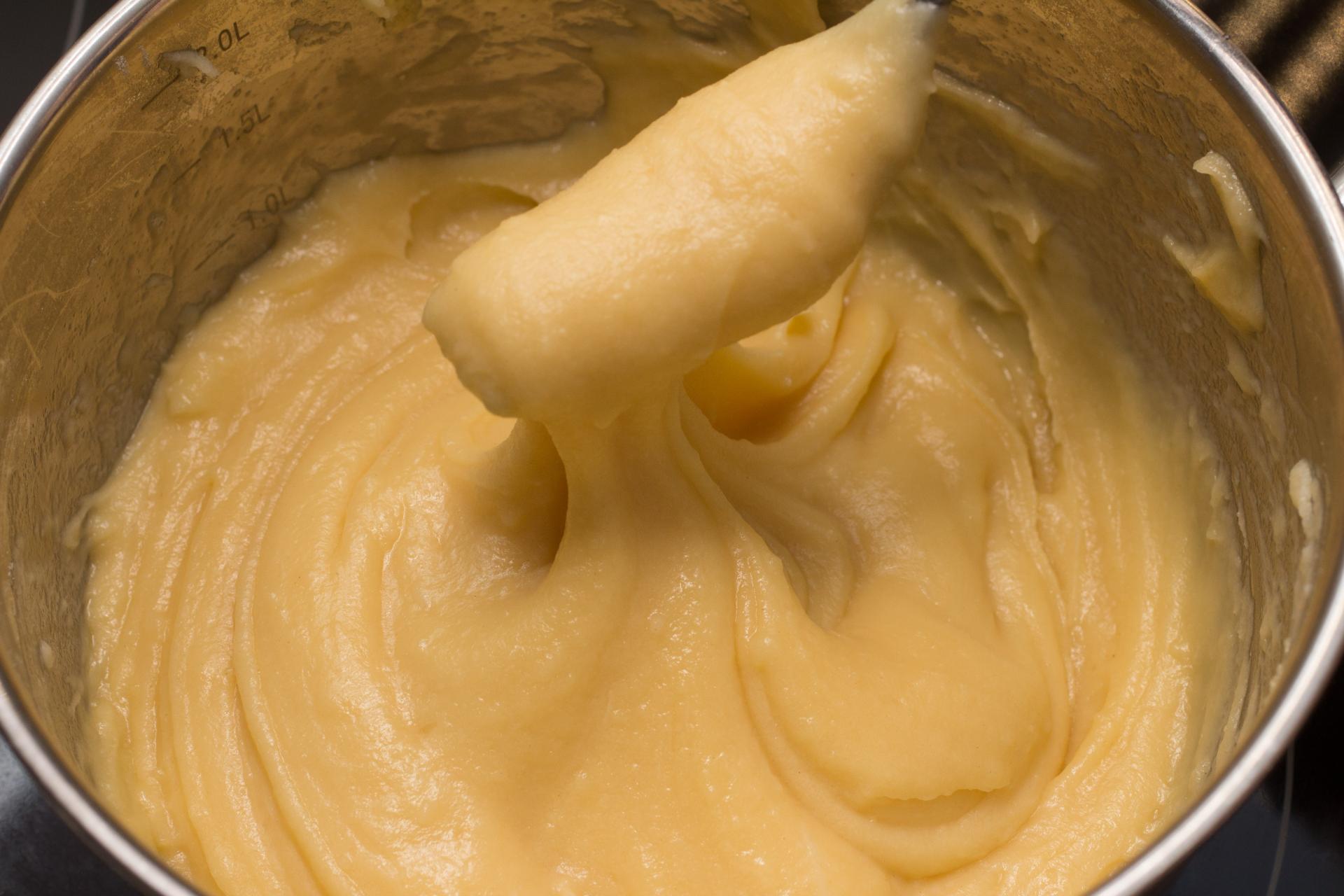
It should be something like this.
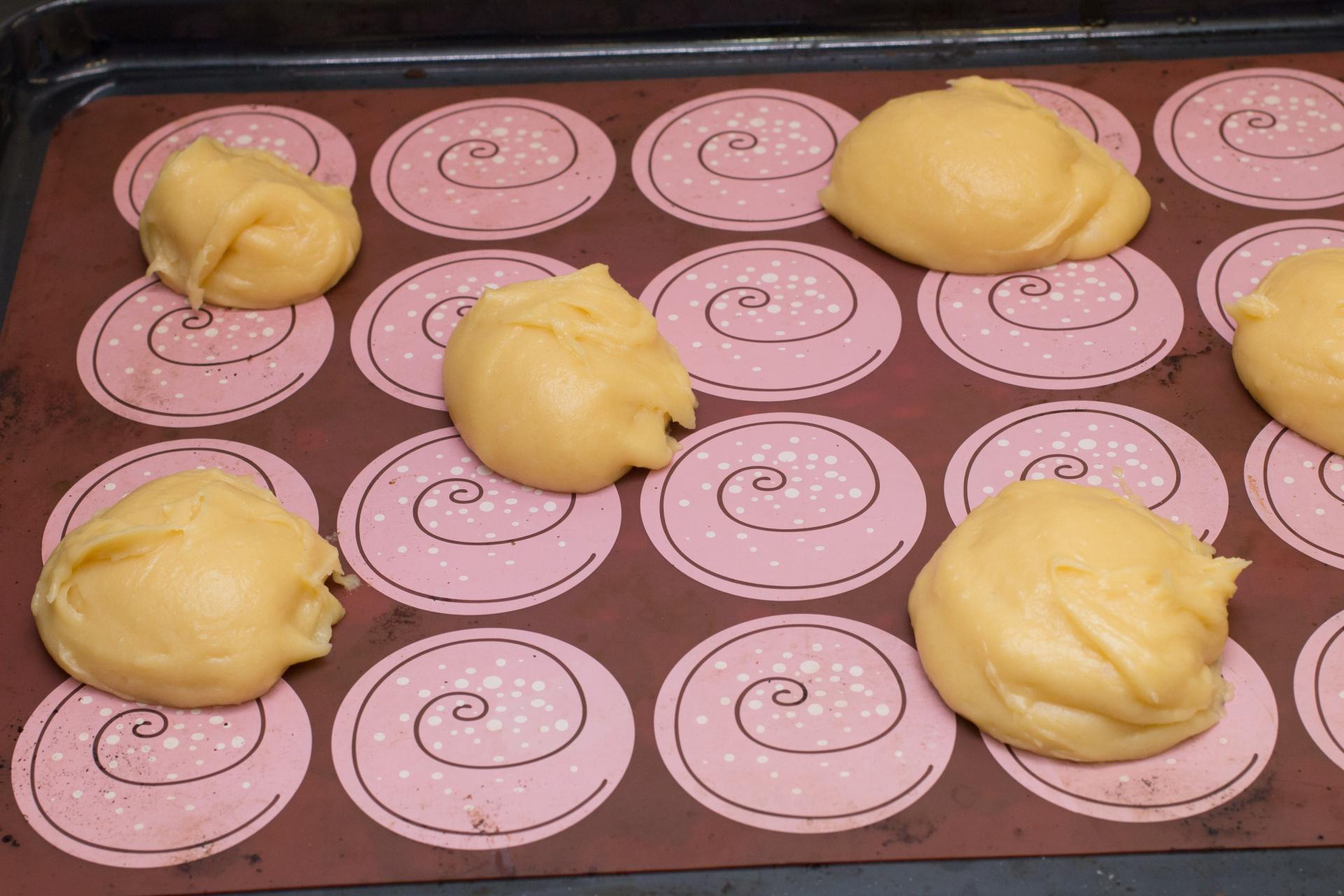
When laying out the mass should spread, but very moderately. I laid out a tablespoon. Perfectionists can use a pastry syringe. Pay attention to the large distance between them and the chess stacking. It is important for us that a large amount of dough does not emit too much water into the chamber air, otherwise there will be problems with the drying of our profiteroles.
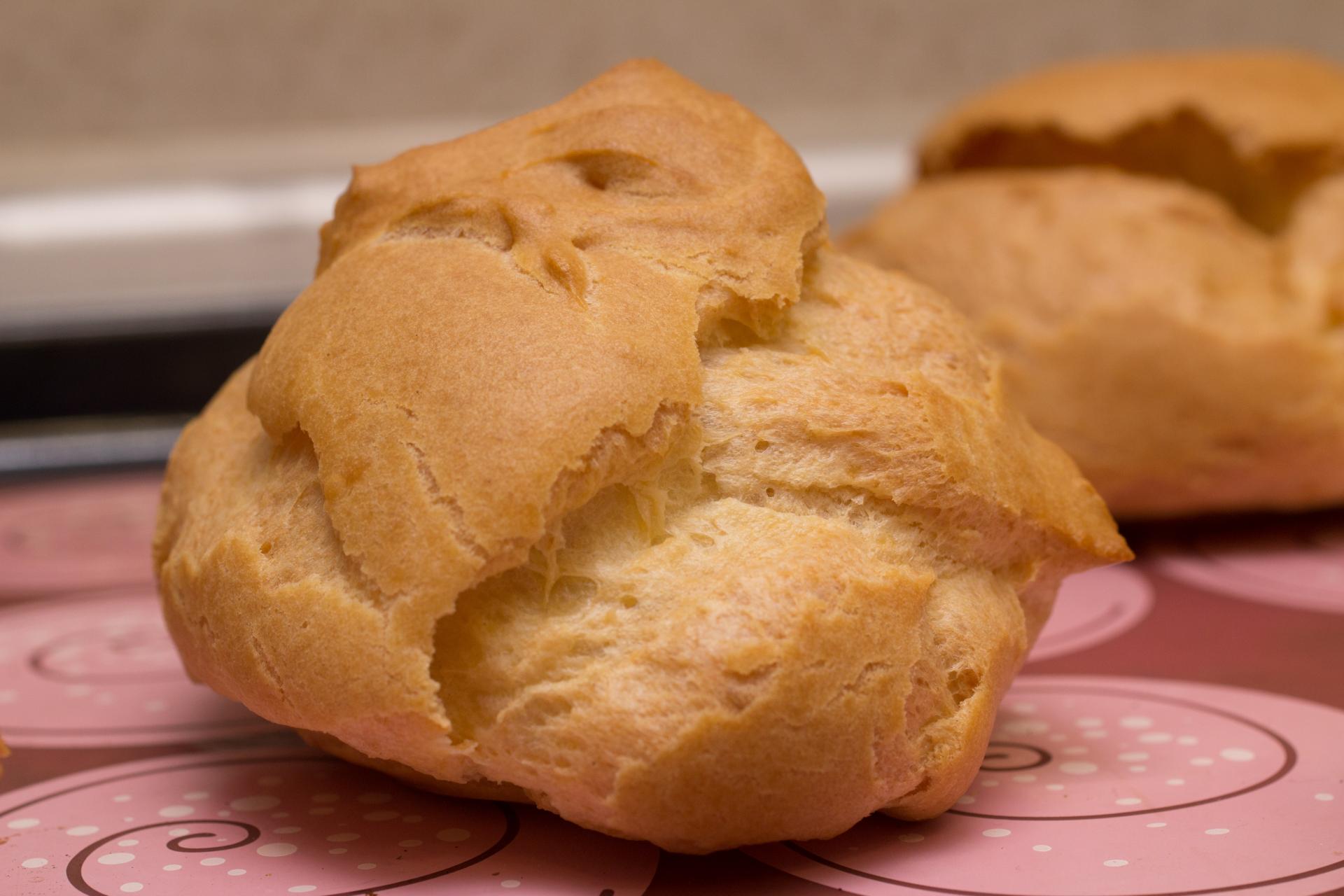
Next, we bake according to the developed scheme:
- 220 ° C - 10-12 minutes. The criterion for the transition to the next mode is termination of oil boiling on the surface and unchanged size.
- 180 ° C - 20 minutes. In the process 2-3 times gently bleed excess steam to a completely dry chamber
- In the final turn over or put on the grate for drying the bottom
If everything went well and at the cut even large bubbles - the first stage of the experiment was completed successfully. You can move from physics to chemistry.
Colloidal solutions and their stability
Features of polymer starch chains
 Amylopectin
Amylopectin Amylose
AmyloseStarch is a mixture of linear and branched macromolecules of amylose and amylopectin. When swelling in hot water, a colloidal solution is formed, the properties of which largely depend on the proportions of the content of macromolecules with different lengths of chains. What is most interesting, the properties of starches can vary greatly depending on the original plant species from which it was obtained. The most frequent variants of starch, which can be bought, if we reject the exotic type of tapioca - it is potato and corn. Do not take the potato, it is worse for our purposes. The peculiarity of corn is in very high stability of colloids obtained even in small doses. For our purposes, the stability of the colloid obtained is the most critical.
Rules for mixing colloidal solutions
If we talk about creams with a complex composition, the most unpleasant consequence of mixing the base with butter or cream is its separation. A characteristic symptom is water droplets on the surface. Surely you have seen similar on not very high quality oil. The key rule for blending is that
dissimilar creams should be of the same temperature . Ice cream can not be mixed with hot custard, for example. To do this, custard must be pre-cooled. And for oil - on the contrary. Warm butter is mixed with warm custard.
The second point is that
mixing should be slow . Either by hand or by a mixer at very low revs. Gently so.
Let's interfere with our colloid!
Practical work on colloid chemistry today - creating the right custard with whipped cream. High stability with temperature drops and storage for more than a day is a criterion for the successful completion of the task. So we need:
- Milk - 500 g
- Eggs C2 - 2 pcs / 100 g
- Sugar - 85 g
- Corn Starch - 35 g
- Natural vanilla in the pod or in sugar
- Butter - 50 g
- Cream 33% - 200 g
- Bitter chocolate> 85% or cocoa mass - 80 g (optional)
From laboratory equipment you will need:
- Kitchen scales
- Mixing bowl
- Hand Whisk / Mixer / Combine / Blender
- Small saucepan
- Confectionery syringe (optional)
Please note that vanilla must be natural. In hell vanillin. No, no chemophobia, synthetic vanillin is no different from the same vanillin inside the pod. But all the garbage in industrial flavor is economy in everything. If vanillin constitutes the conditional 85% of the aroma of natural vanilla, then no one will spend money on the synthesis of another fifty substances, which give the remaining 15% of the result. And in a gentle cream - this is critical. The aroma of this pod is very different subtle nuances, it is much richer and more multifaceted. As a compromise, I can advise you to take vanilla sugar. Please note that the composition should contain sugar, natural vanilla and, possibly, natural vanilla extract. Then everything will be fine.
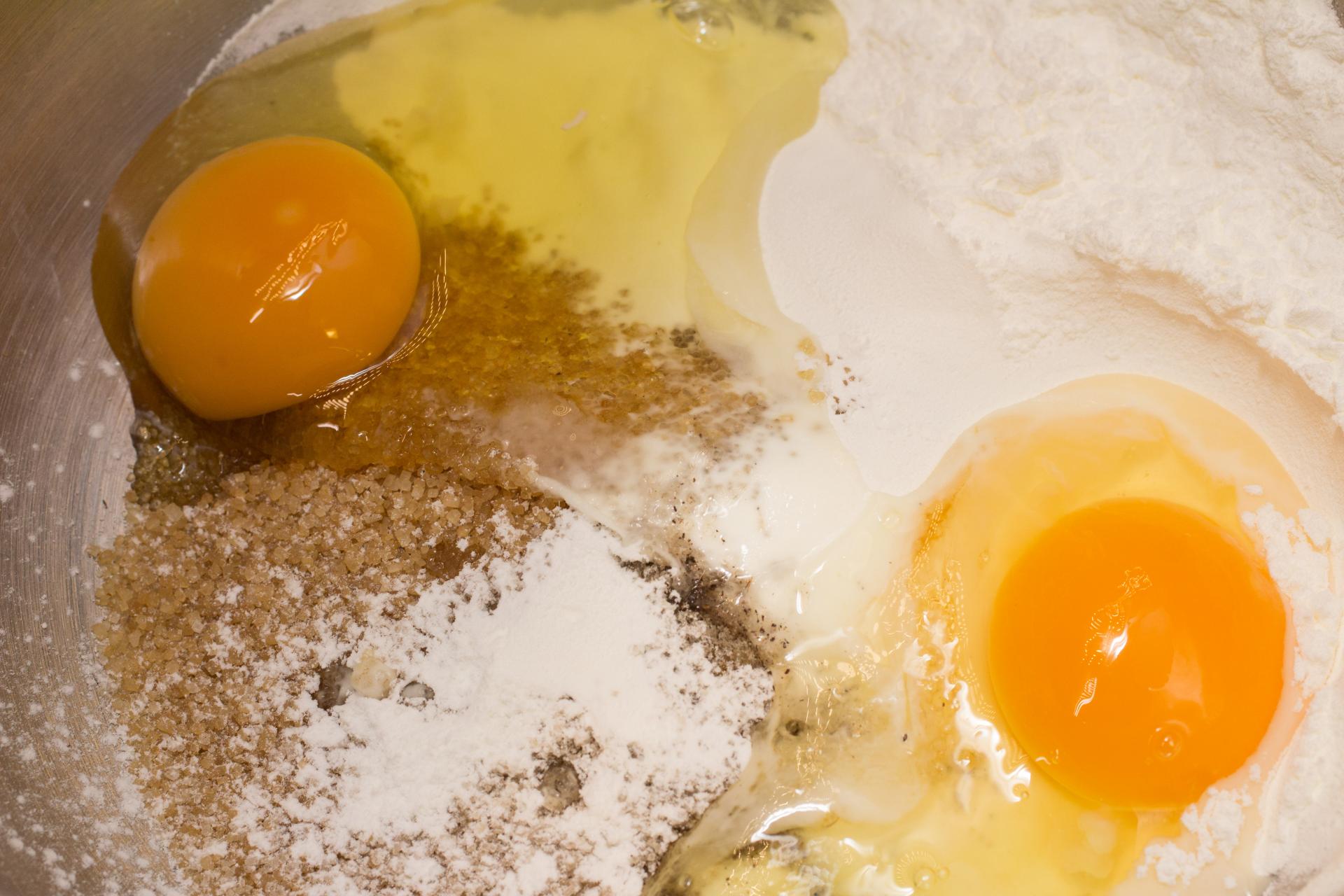
Put the eggs, sugar, starch and vanilla in the mixer tank or bowl, where you mix it all up. Stir until smooth, whipping makes no sense.
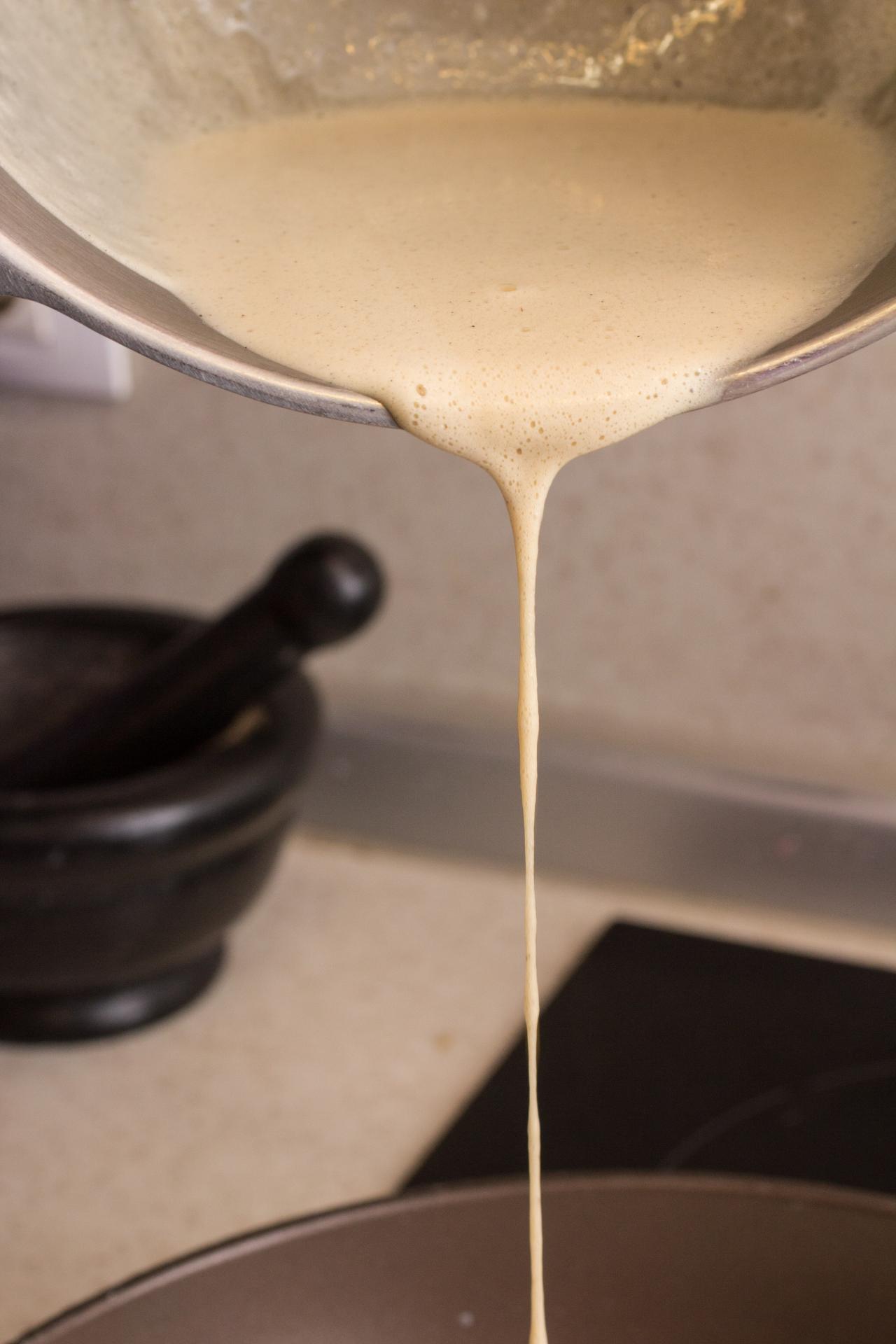
Heat the milk in a saucepan almost to a boil. Only without special effects and pouring all the burning foam. Watch the process) Set the heat to minimum and pour the egg mixture with starch onto the jet. In the process, quickly stir and see how the mixture thickens. Give warm another 3 minutes, then add the oil. In the chocolate version - after the butter is also grated / chopped chocolate.

The final cream is thick while warm and turns into a gentle mousse when cooled in the refrigerator. If you plan to eat it separately without cream, reduce the amount of starch to 27-30 g.
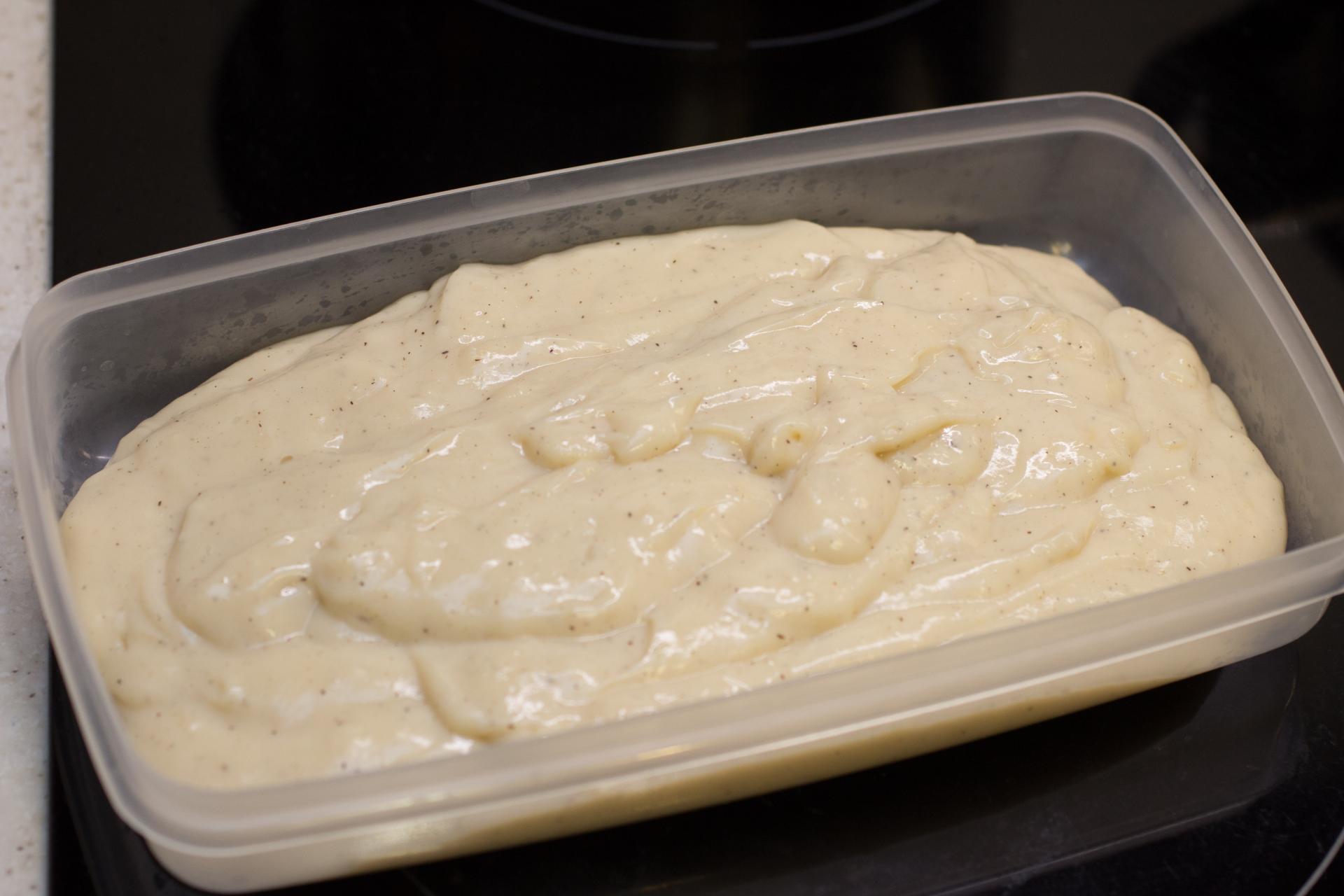
Pour into a container with a lid, tightly close and set to cool for 3 hours in the fridge.
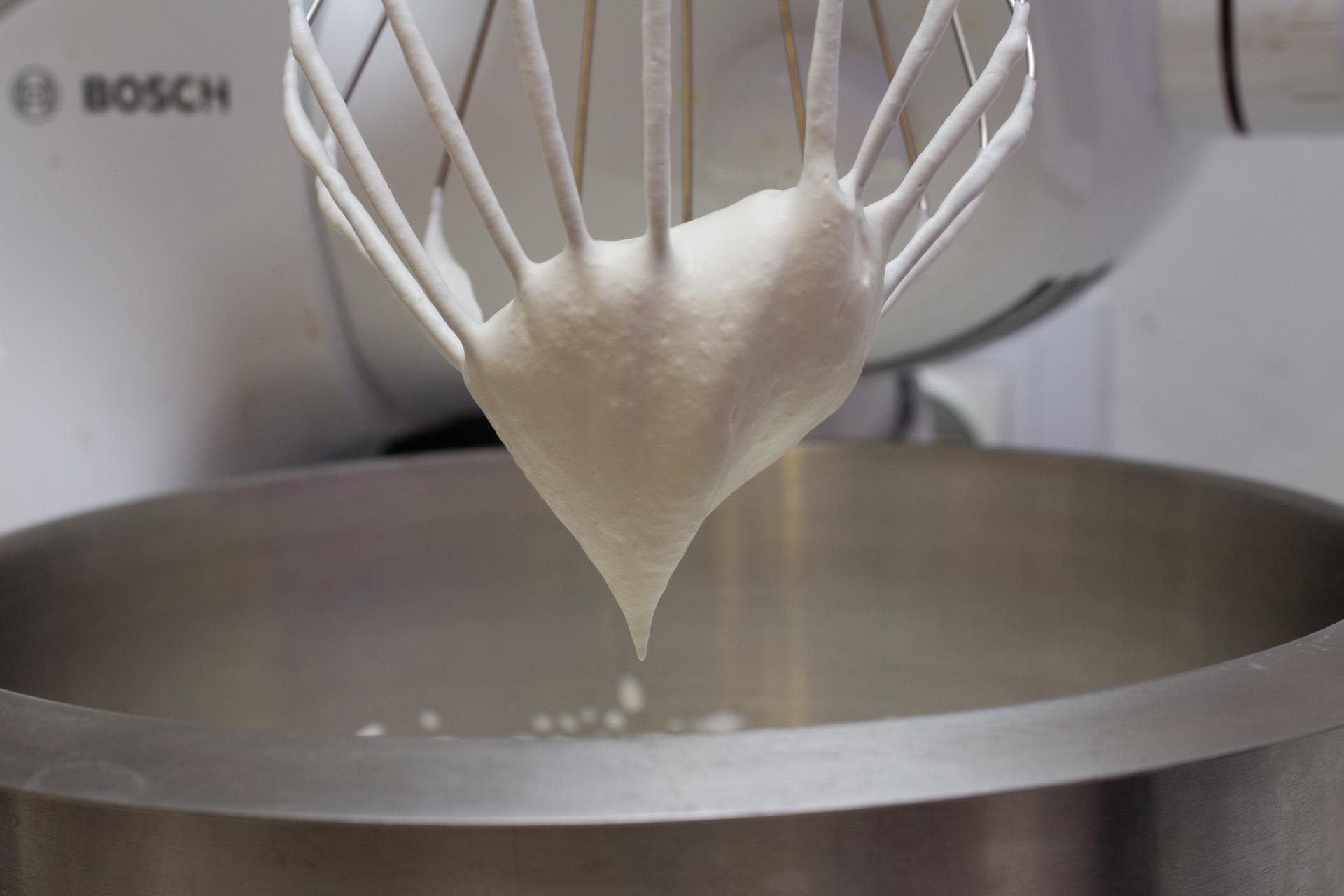
After 3 hours, begin to whip the cream. Please note - the cream must be icy! Ideally, also cool the steel bowl in the fridge. The cream has its own difficulties in terms of foam stability. I highly recommend Petmol 33%, there is still an additional carrageenan as a stabilizer. The criterion of overrun is sharp peaks that retain their shape and do not drip.
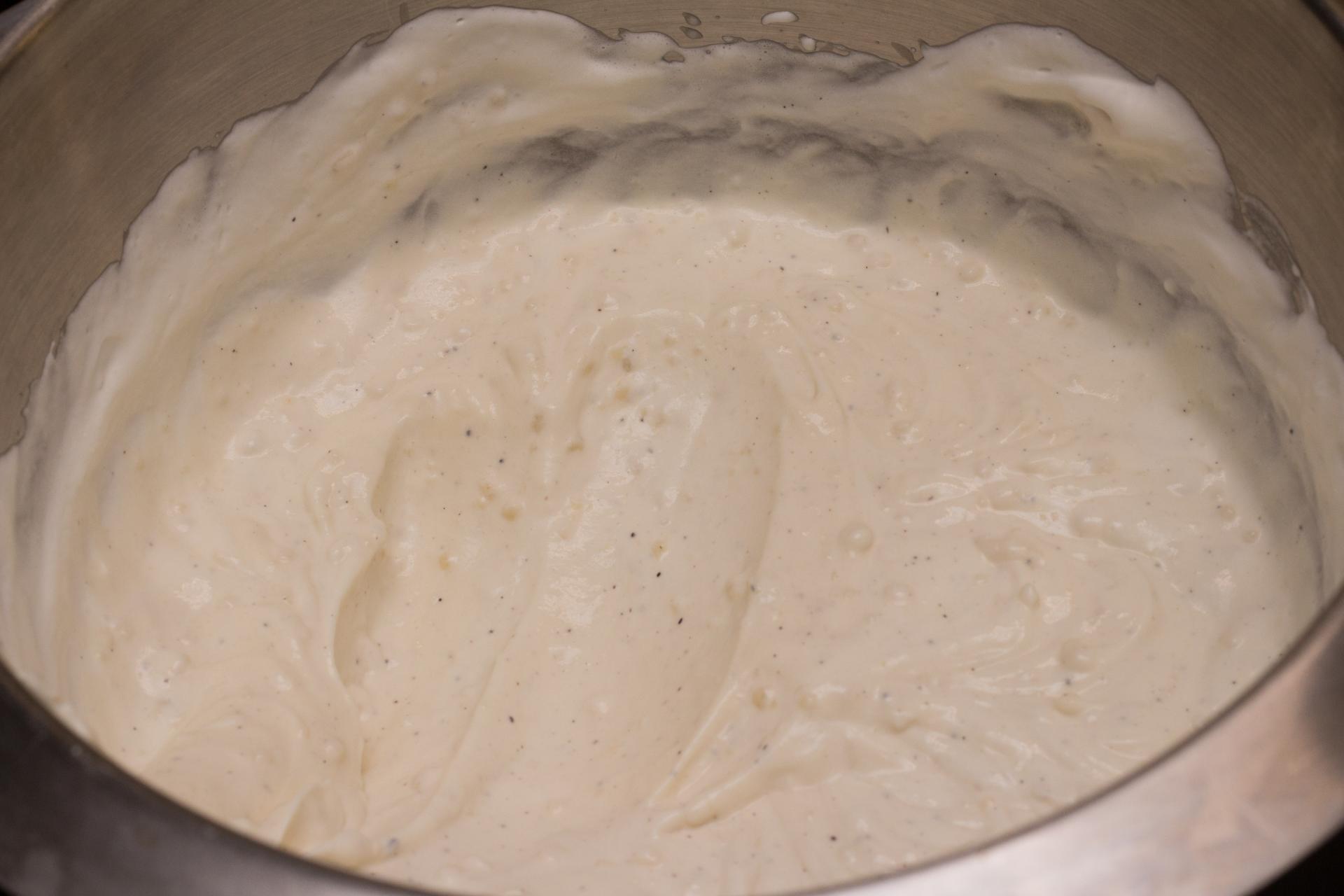
Now add
chilled custard from the refrigerator and mix at low speed. The output is very airy filling.
Completion of the workshop
This completes our test tasks. You can combine the results of both tasks and put the cream in profiteroles with a syringe or through careful incisions with a spoon. You can finally stuff Olivier into profiteroles, and eat cream at night from a basin with a spoon. In any case, all happy new year. Please each other)